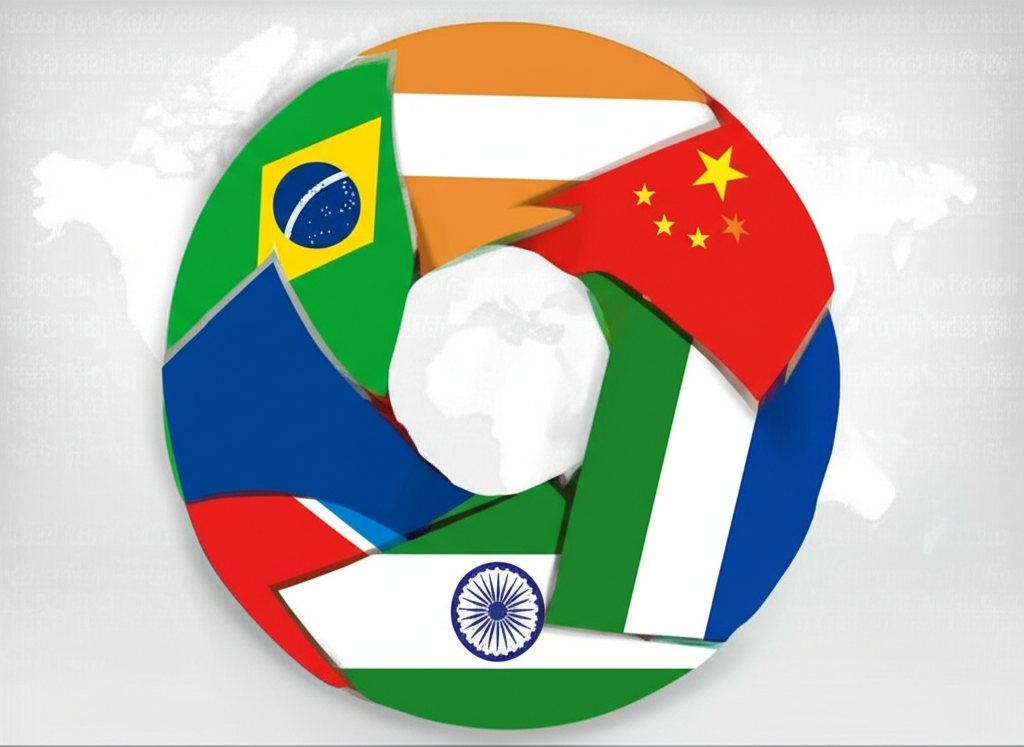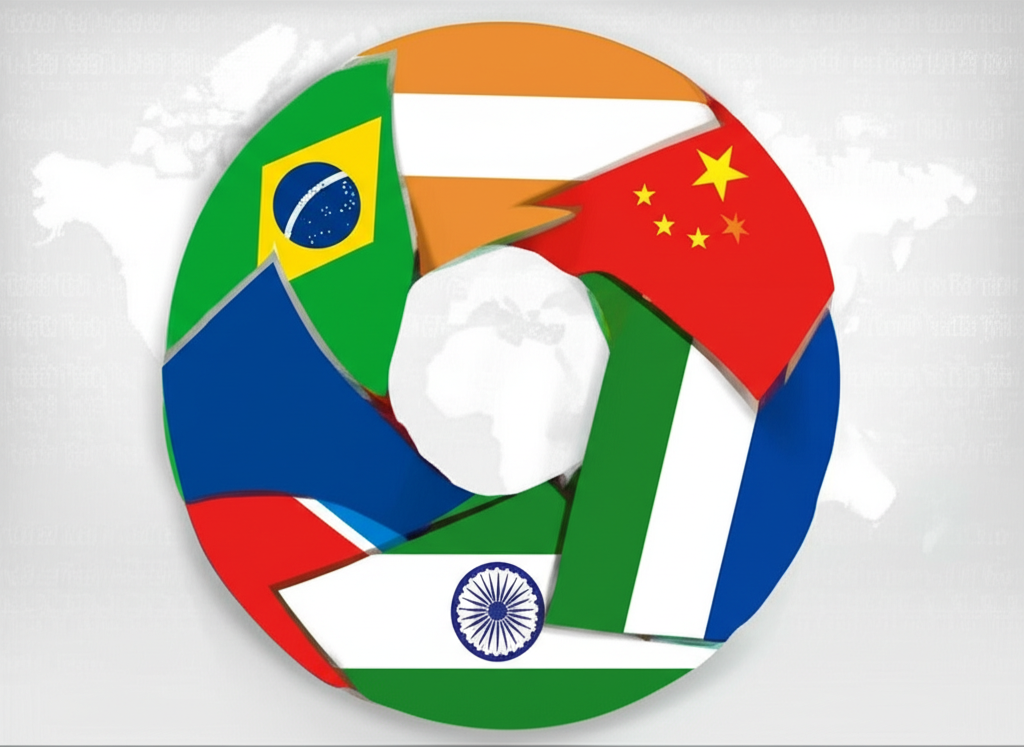Introduction: Navigating BRICS ETFs for United States Investors in 2025
The world economy keeps shifting, and emerging markets frequently deliver strong chances for spreading out investments and boosting returns. The BRICS group-Brazil, Russia, India, China, and South Africa-stands out as a key player drawing interest from investors everywhere. American investors aiming to broaden their reach into these vibrant economies can turn to BRICS exchange-traded funds (ETFs) for an efficient entry point. Heading into 2025, getting a handle on these funds’ details, upsides, and pitfalls becomes essential. This guide breaks it down for U.S. investors, offering insights into the landscape ahead to help spot openings and hurdles.

These ETFs let investors tap into a mix of fast-changing markets without the hassle of picking individual stocks across borders. With BRICS nations accounting for a huge slice of the global population and economic output, they hold real promise for long-term gains. Yet success here depends on balancing potential rewards against the uncertainties that come with international exposure.

What Exactly Are BRICS Countries and BRICS ETFs?
Grasping BRICS ETFs starts with understanding the group behind them and how these funds operate.
Defining BRICS: Brazil, Russia, India, China, South Africa
Economist Jim O’Neill at Goldman Sachs first used the term “BRIC” back in 2001 to spotlight Brazil, Russia, India, and China as fast-rising powers. These countries boast massive populations, vast territories, and rich resources, marking them as tomorrow’s economic giants. South Africa came on board in 2010, expanding it to BRICS. Together, they cover more than 40% of the world’s people, about a quarter of global GDP, and a big share of international trade. The group pushes for tighter economic ties, shakes up traditional financial systems, and champions cooperation among nations. Source: Council on Foreign Relations
What is an ETF? Brief Explanation of Exchange-Traded Funds
Exchange-traded funds pool money to buy assets like stocks, commodities, or bonds, and they trade on exchanges just like individual shares. Unlike mutual funds, which set prices only at the end of the day, ETFs trade all day long at current market values. Most aim to mirror a particular index, sector, or strategy. Investors love them for the built-in variety, cheaper fees than many managed funds, and simple buying and selling.
How BRICS ETFs Work: Diversified Exposure to the Economies of These Nations
BRICS ETFs give investors a spread-out stake in the economies of Brazil, Russia, India, China, and South Africa. They usually hold shares from companies in these places, following a dedicated BRICS index. Dropping money into one of these funds means getting a piece of various industries and regions in the bloc all at once, skipping the need to dig into separate stocks from each country. This setup eases entry into emerging markets while adding some automatic risk-spreading.
Why United States Investors Consider BRICS ETFs for 2025
BRICS ETFs fit well into a U.S. investor’s mix, especially when planning for 2025, by addressing key portfolio needs.
Growth Potential: Highlighting the Economic Dynamism of BRICS Nations
BRICS countries often outpace developed economies like the U.S. or Europe in growth. India and China lead the charge in fueling worldwide expansion. Through BRICS ETFs, American investors can ride this wave, gaining from rising middle classes, surging consumer demand, and big infrastructure pushes. Such vigor contrasts sharply with the steadier but slower pace of mature markets, potentially lifting overall returns.
Diversification Benefits: Reducing Portfolio Concentration in US Markets
Diversification means scattering bets across assets, industries, and places to cut down on risks. Plenty of U.S. portfolios lean too heavily on homegrown investments. BRICS ETFs help by adding international flavor, lessening dependence on just the American economy. This can shield against U.S.-specific slumps or industry troubles, smoothing out the ride.
Access to Emerging Markets: Gaining Exposure to Developing Economies
Emerging markets make up a huge, expanding part of the world economy, with unique cycles, sectors, and trends. BRICS ETFs open the door to some of the biggest players in this space, letting U.S. investors join in their ongoing rise and value buildup over time.
Inflation Hedge: Potential Role in a Diversified Portfolio
Though not the main appeal, BRICS markets can sometimes counter inflation. Their inflation patterns differ from those in advanced economies, and stakes in their currencies or resource sectors might offset U.S. price hikes. That said, shifting exchange rates can add their own complications.
The Pros and Cons of Investing in BRICS ETFs from the United States
BRICS ETFs, like any option, bring clear strengths alongside notable drawbacks that U.S. investors need to evaluate.
Pros:
- High Growth Prospects: Entry to economies likely to see faster GDP increases than in developed countries.
- Portfolio Diversification: Cuts down on U.S.-centric risks by reaching into varied world markets.
- Accessibility: Simple to trade on big U.S. exchanges via a regular brokerage setup.
- Lower Costs: Fees tend to run lower than those for managed emerging-market mutual funds.
- Transparency: Funds reveal their holdings every day, giving a clear view of the portfolio.
Cons:
- Geopolitical Risks: Openness to unrest, trade fights, and global strains (such as U.S.-China tensions or the Russia-Ukraine situation).
- Currency Fluctuations: Returns can suffer if the U.S. dollar gains ground against BRICS currencies.
- Market Volatility: These markets swing more wildly than established ones, thanks to evolving financial setups and sensitivity to worldwide jolts.
- Regulatory Uncertainty: Abrupt policy shifts, rules, or fund restrictions in BRICS countries could arise.
- Specific Tax Implications for US Investors: Foreign holdings might trigger unique taxes on dividends and gains, plus extra paperwork (like Form 8621 for certain foreign entities, though many ETFs sidestep this).
How United States Investors Can Invest in BRICS ETFs in 2025
Getting into BRICS ETFs as a U.S. investor is pretty direct if you stick with a regulated American brokerage.
1. Opening a Brokerage Account (US-Regulated): Start by setting up an account at a U.S.-overseen firm like Charles Schwab, Fidelity, Vanguard, E*TRADE, or TD Ameritrade (now part of Schwab). Confirm they provide access to ETFs on U.S. exchanges.
2. Researching Available BRICS ETFs: Pure BRICS funds are rarer now, with many investors opting for wider emerging-market choices that lean heavily on BRICS or single-country options. Check out each fund’s makeup, costs, and how closely it follows its target.
3. Placing Buy Orders: After picking an ETF, just enter a buy order in your account, treating it like any stock.
4. Considerations for US Market Access and Compliance: Pick ETFs listed on U.S. venues like the NYSE or Nasdaq, or ones your broker can handle. Regulated U.S. platforms take care of securities rules, keeping things straightforward.
Top BRICS ETFs for United States Investors in 2025: A Comparative Look
No one ETF rules as the top BRICS pick for Americans, but several deliver solid coverage of these economies. Once-common “BRIC” or “BRICS” labels have shifted toward broader emerging funds or been hit by events like sanctions on Russia. U.S. folks often go for wide-reaching emerging ETFs packed with BRICS or targeted national funds.
For 2025 options and tips tailored to U.S. investors:
| ETF Name (Example) | Ticker | AUM (Approx.) | Expense Ratio | Focus/Key Holdings |
|---|---|---|---|---|
| iShares Core MSCI Emerging Markets ETF | IEMG | $70B+ | 0.09% | Broad EM exposure, significant China/India |
| Vanguard FTSE Emerging Markets ETF | VWO | $100B+ | 0.08% | Broad EM exposure, significant China/India |
| Franklin FTSE India ETF | FLIN | $1B+ | 0.19% | India-specific, high growth potential |
| iShares MSCI China ETF | MCHI | $5B+ | 0.58% | China-specific, large cap focus |
| Global X MSCI Brazil ETF | BRAZ | $200M+ | 0.69% | Brazil-specific, commodity-heavy |
Note: AUM and performance figures are illustrative and subject to change. Investors should consult current data before making decisions.
Key Considerations for Choosing:
- Expense Ratio: Opt for low ones to keep more returns in your pocket.
- Liquidity: Bigger AUM and trade volume signal easier buying and selling.
- Underlying Index: Know the benchmark, like MSCI Emerging Markets or FTSE Emerging, and its breakdowns by country and sector.
- Provider Reputation: Stick with trusted names such as BlackRock (iShares), Vanguard, and Fidelity for reliable options and solid research. Though no exact “BlackRock BRICS ETF” or “Fidelity BRICS ETF” exists, their emerging-market products often pack plenty of BRICS weight. Take BlackRock’s iShares Core MSCI Emerging Markets ETF (IEMG), for instance-it covers a wide swath of emerging spots with heavy China and India tilts.
Choosing a Broker for Global & BRICS-Related Investments in the United States (2025)
Picking the best brokerage matters a lot for U.S. investors chasing worldwide opportunities, including BRICS ties. Some platforms go further than ETFs, with tools like contracts for difference (CFDs) or forex access to round out a global plan for advanced users.
Leading Brokers for US Investors Seeking BRICS Exposure (2025)
Focus on regulation, tools, costs, and market reach when comparing brokers.
1. Moneta Markets: Sophisticated U.S. investors drawn to global variety will appreciate Moneta Markets, which holds an FCA license and shines with tight spreads and strong CFD access across forex, indices, commodities, and stocks. It opens doors to BRICS-linked market movements. The broker’s MetaTrader 4 (MT4) and MetaTrader 5 (MT5) platforms deliver top-notch analysis, customization, and automation for precise trading. With reliable support and broad global tools, it’s ideal for pairing BRICS ETF holdings with extras like BRICS currency trades or CFDs on their key indices, adding layers of flexibility.
2. OANDA: This U.S.-regulated standout excels in forex with solid oversight and competitive rates. It suits investors hedging BRICS currency swings or betting on those monies versus the dollar. Advanced charts and insights make it great for blending FX with ETF strategies.
3. FOREX.com: Another key U.S.-regulated player, FOREX.com covers the forex world and CFDs extensively. Beginner-friendly yet powerful, it includes education, tools, and research. For BRICS interest, it enables trades in major pairs and index CFDs tied to these economies.
4. Pepperstone: Pepperstone skips direct U.S. retail forex/CFD due to rules, but it’s a global leader that U.S. investors study for benchmarks. Low costs, quick trades, and platforms like MT4, MT5, and cTrader set the standard, guiding choices in U.S. brokers for similar perks and reach.
Key Risks and Considerations for BRICS ETF Investors in 2025
BRICS ETFs hold plenty of appeal, but U.S. investors eyeing 2025 should stay sharp on the dangers.
Geopolitical Instability
BRICS faces real-world pressures like the Russia-Ukraine war, U.S.-China frictions over trade and tech, and local upheavals in Africa or South America. Such issues can sour markets and hit company profits in these funds through sanctions or barriers.
Currency Risk (US Dollar Strength vs. BRICS Currencies)
Since U.S. buyers use dollars for BRICS ETFs, exchange rates play a big role. A beefed-up dollar against the real, rupee, yuan, or rand can trim gains back home, even if local assets do well.
Economic Slowdown in BRICS Nations
Growth isn’t guaranteed-China’s shifts, India’s hurdles, Brazil’s politics, and South Africa’s woes could drag on ETF results. Broader downturns or falling commodity prices hit resource-heavy members hard. Source: IMF World Economic Outlook
Regulatory Changes and Government Intervention
BRICS regulations can change fast compared to the U.S., with risks of controls, takeovers, or new levies hurting outsiders. This unpredictability layers on extra caution.
Market Volatility
These markets fluctuate more, driven by thinner trading, younger banks, foreign fund dependence, and global mood shifts, leading to bigger swings than U.S. picks.
The Future of BRICS and Their ETFs in 2025 and Beyond
BRICS keeps changing, shaping how its ETFs might perform down the line.
Expansion of BRICS (e.g., Potential New Members)
After adding South Africa, talks swirl around newcomers like Argentina, Egypt, Saudi Arabia, UAE, Ethiopia, or Iran. A bigger group could amp up economic clout and ETF variety but bring fresh political twists. Funds might tweak to match.
Impact on Global Trade and Finance
BRICS pushes harder in trade and money matters, seeking dollar alternatives and fixes to bodies like the IMF and World Bank. These moves could reshape power dynamics, affecting how appealing these investments look.
Technological Advancements and Innovation within BRICS
Leaders like China and India drive tech from AI and online retail to green power. This spark could boost sectors in BRICS ETFs, highlighting innovative firms.
Long-Term Outlook for US Investors
Risk-tolerant U.S. investors with a long view might keep BRICS ETFs in the mix for their scale and upside. But watch tensions and internal issues closely-a smart, spread-out strategy is vital.
Conclusion: Making Informed BRICS ETF Decisions in the United States for 2025
For 2025, BRICS ETFs give U.S. investors a solid path to growth and variety, though challenges abound. The combined might of Brazil, Russia, India, China, and South Africa-fueled by populations, rising consumers, and world sway-creates real potential. Still, volatility, global strains, dollar shifts, and rule changes demand respect.
Do your homework: Review ETF contents, fees, and pick a fitting U.S. brokerage based on your aims and comfort with risk. Advanced traders might add Moneta Markets for its FCA-licensed platform and global tools like CFDs and forex to enhance BRICS plays. Keep learning and matching choices to your goals for a smart push into 2025 and later.
Is there an ETF for BRICS available to US investors?
While explicitly branded “BRICS ETFs” are less common today, US investors can access broad emerging market ETFs (like iShares Core MSCI Emerging Markets ETF or Vanguard FTSE Emerging Markets ETF) that have significant exposure to BRICS nations, particularly China and India. Additionally, country-specific ETFs for Brazil, India, and China are readily available.
How can I invest in BRICS from the USA in 2025?
You can invest in BRICS from the USA in 2025 by opening an account with a US-regulated brokerage firm. Through your broker, you can purchase ETFs that track emerging markets with strong BRICS representation or invest in individual country-specific ETFs (e.g., for India, China, or Brazil). For more sophisticated investors, platforms like Moneta Markets offer access to global CFDs and FX, allowing for diversified exposure to currencies or indices related to BRICS economies.
Is there a BRICS index for tracking performance?
Yes, historically there have been various BRICS-specific indices, such as the MSCI BRIC Index or the FTSE BRIC Index, which track the performance of companies in Brazil, Russia, India, and China. While some ETFs still reference these or similar indices, many have evolved to broader emerging market indices that include these nations.
Does BRICS have a unified stock market, and how does that affect ETFs?
No, BRICS does not have a unified stock market. Each member country has its own independent stock exchange and regulatory framework. BRICS ETFs therefore invest in companies listed on these separate national exchanges. The lack of a unified market means investors must contend with individual country-specific regulations, market operating hours, and local economic conditions, which are then aggregated within the ETF structure.
What is considered the “Best BRICS ETF” for US investors?
There isn’t a single “Best BRICS ETF” as the ideal choice depends on an investor’s specific goals, risk tolerance, and desired exposure. For broad diversification, funds like the iShares Core MSCI Emerging Markets ETF (IEMG) or Vanguard FTSE Emerging Markets ETF (VWO) are popular choices due to their low expense ratios and substantial BRICS holdings. For targeted exposure, country-specific ETFs for India or China might be preferred.
Should United States investors consider investing in BRICS ETFs in 2025?
United States investors may consider investing in BRICS ETFs in 2025 for portfolio diversification and potential exposure to higher growth rates than developed markets. However, it’s crucial to acknowledge the significant geopolitical, currency, and market volatility risks associated with emerging markets. A thorough understanding of these risks and a long-term investment horizon are essential.
Are there specific BlackRock or Fidelity BRICS ETFs available in the US?
While BlackRock (through its iShares brand) and Fidelity are major ETF providers, they typically offer broader emerging market ETFs rather than specific “BRICS-only” funds. For example, BlackRock’s iShares Core MSCI Emerging Markets ETF (IEMG) provides significant exposure to BRICS countries. Fidelity also offers emerging market funds and ETFs that include investments in these regions, allowing US investors to gain BRICS exposure through their established product lines. For those looking beyond traditional ETFs to gain exposure to global market dynamics tied to BRICS, a broker like Moneta Markets can offer diverse instruments such as FX and CFDs on indices or shares, providing alternative avenues for sophisticated investors.



No responses yet